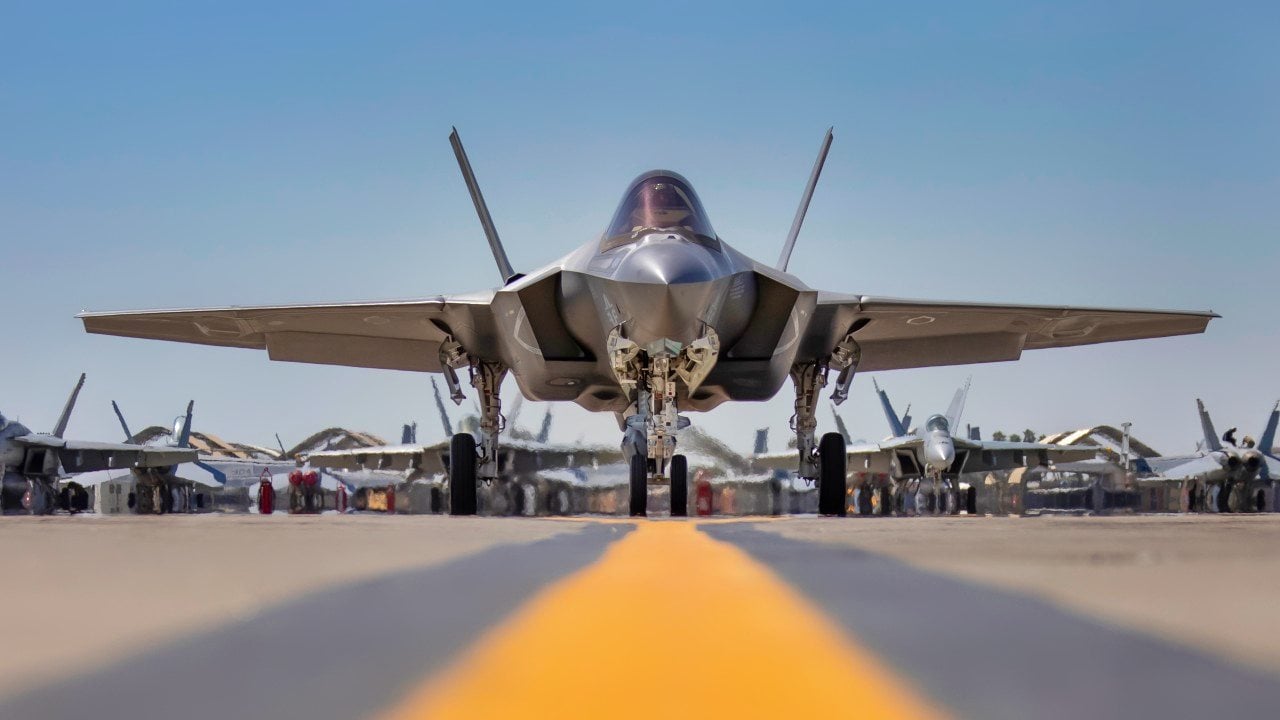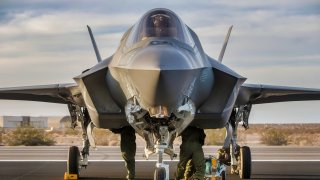Dozens of F-35 Stealth Fighters Just Went to War in a Simulation
This year's Red Flag was notable as it marked the first time Australian F-35s had participated. The fifth-generation aircraft from both the U.S. and Australian Air Forces were put to the test.
Air Force's Red Flag 24-1 Showed That the F-35 is Unstoppable: Last month, more than 30 units from across the U.S. Department of Defense, the Royal Air Force, and the Royal Australian Air Force had converged at Nellis Air Force Base (AFB), Nevada for Red Flag 24-1 – a joint exercise that provided aircrews and maintainers the experience of multiple, intensive air combat sorties in the safety of a training environment. This iteration of Red Flag was also meant to provide unique training with an emphasis on readiness for high-end warfighting and strategic competition.
During the two-week exercise – which centered on enhancing interoperability within the allied forces, with a particular focus on addressing strategic challenges in the Indo-Pacific region – dozens of Lockheed Martin F-35 Lightning IIs operated together. Those aircraft flew alongside U.S. Air Force F-22 Raptors and B-2 Spirits, Royal Air Force FGR-4 Typhoon fighters, Royal Australian Air Force F-35As, and U.S. Navy EA-18G Growlers.
It was truly a multi-billion dollar showcase of Western air power.
The aircraft took part in joint operations at the Nevada Test and Training Range, the U.S. Air Force's premier military training area with more than 12,000 square miles of airspace and 2.9 million acres of land. Nearly 100 aircraft departed Nellis AFB twice per day, with some of them staying airborne for up to five hours. The training sorties also included night launches, which simulated nighttime combat operations.
Though it was just an exercise, it wasn't an air show. It was still serious business for the participants.
Red Flag, which started after the Vietnam War to provide pilots combat seasoning, has grown into an integrated ultra-modern fight, testing various units' capabilities in the air, space and cyber domains, the Air Force announced. It involves a friendly "Blue" force that takes on an enemy "Red" force in scenarios created by a host "White" cell, the 414th Combat Training Squadron.
"Red Flag is a valuable opportunity for us to integrate the F-35 with other platforms and allied nations and fight in very realistic, challenging scenarios against the most advanced threats they can replicate," explained Lt. Col. Nathan Heguy, commander of the 412th Fighter Squadron.
Putting the F-35 to the Test
This year's Red Flag was notable as it marked the first time Australian F-35As had participated. The fifth-generation aircraft from both the U.S. and Australian Air Forces were put to the test.
As a multi-role stealth fighter, the Lightning II's primary job in many of these missions was "Offensive Counter Air," which could include escorting and protecting stealth bombers or other fighters by detecting and picking off enemy aircraft before they attack.
In addition, the F-35 was employed to track down and eliminate surface-to-air threats with a combination of technology and tactics that are unique to the stealth aircraft. The Nevada Test and Training Range, in particular, replicates surface threats "better than anywhere else in the world," the Air Force added.

Red Flag 2024-1 was meant to simulate a potential conflict, and the threats were greater than what is even being seen currently in Ukraine as ground target objectives were protected by radar and surface-to-air missile networks woven together in lethal aerial shields. It was a situation where legacy aircraft could not survive.
However, the F-35's stealth, advanced sensors, electronic attack, and communications capabilities made it ideal for "quarterbacking" the modern fight.
"So far, we have had success taking these threats out and surviving, which is notable when you combine them with the very robust air-to-air threats here," added Heguy. "But, not every day is a win. Some days are harder than others, and if we’re not struggling in training, we’re not training hard enough."

While the F-35 was able to hold its own in the air, it was able to hold up on the ground as well, thanks to the maintainers in the 421st FGS.
"The jets have been performing extremely well. We haven't lost a single sortie due to a maintenance issue," said Maj. Bryan Butler, 421st FGS commander. "That's a testament to our Airmen. Their ability to learn from this experience while executing the mission at the same time."
Author Experience and Expertise: Peter Suciu
Peter Suciu is a Michigan-based writer. He has contributed to more than four dozen magazines, newspapers, and websites with over 3,200 published pieces over a twenty-year career in journalism. He regularly writes about military hardware, firearms history, cybersecurity, politics, and international affairs. Peter is also a Contributing Writer for Forbes and Clearance Jobs. You can follow him on Twitter: @PeterSuciu. You can email the author: [email protected].


